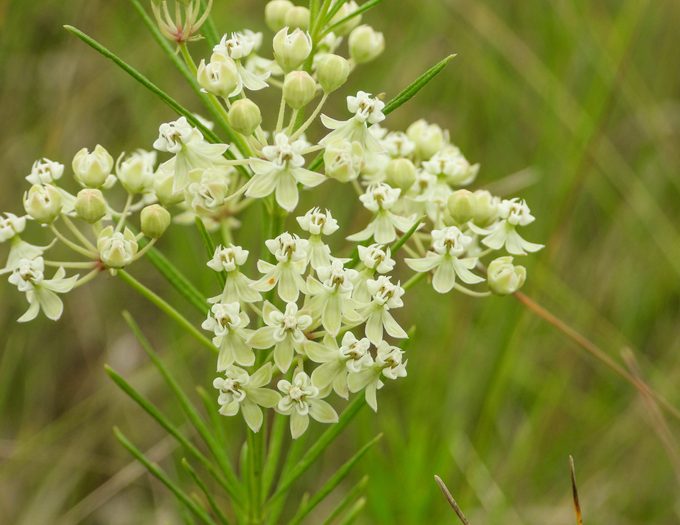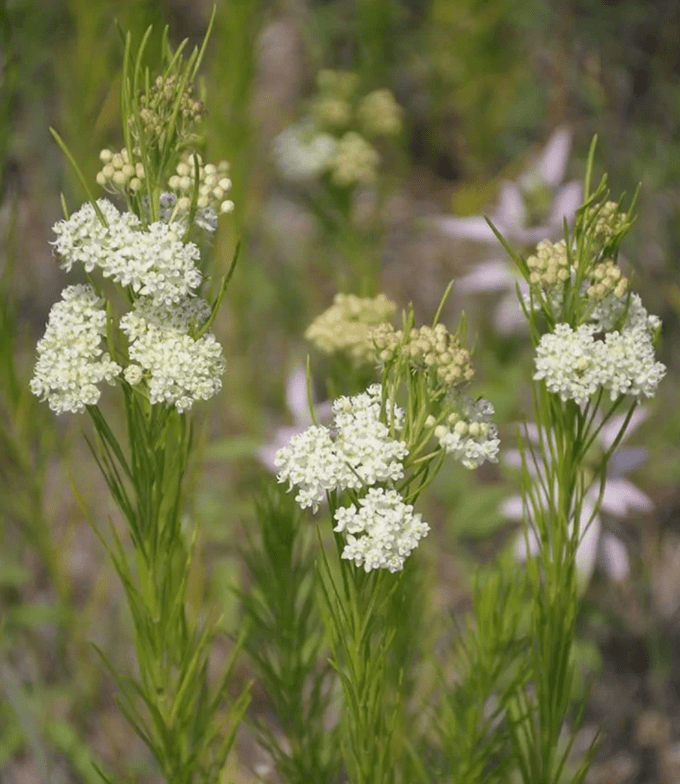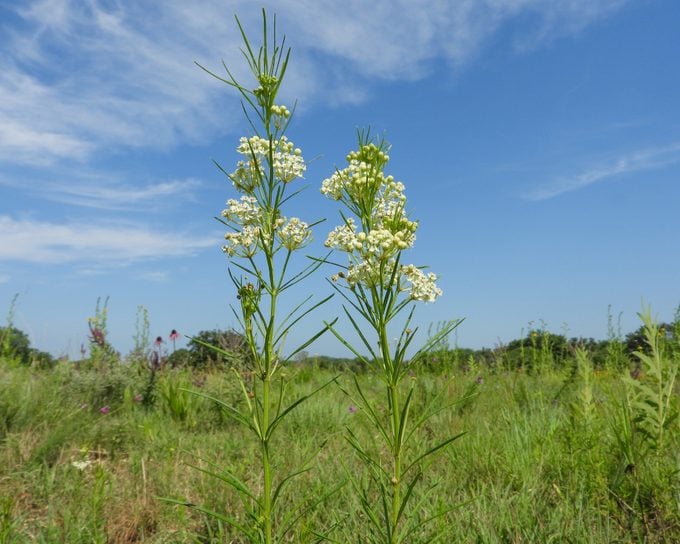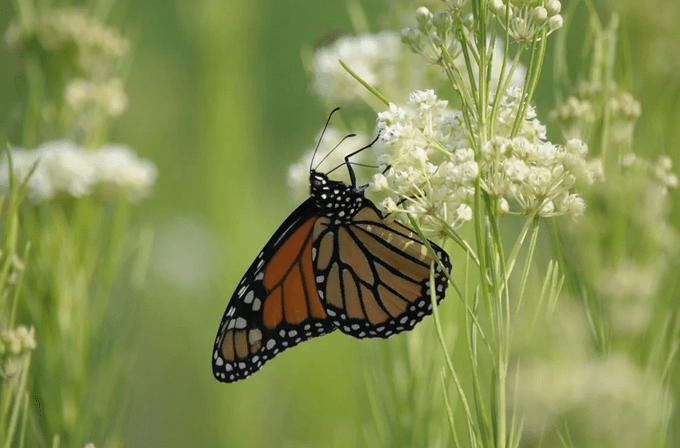How to Grow Whorled Milkweed for Monarch Butterflies
Updated: Jan. 26, 2024
For late-summer blooms that feed hungry monarch butterflies, try whorled milkweed.
Ready to explore more options for monarch butterflies beyond common milkweed? Whorled milkweed (Asclepias verticillata) is a great pick if you want pretty blooms later in the summer season — and monarchs love it! Learn more about this daintier variety of milkweed.
Before you start gardening, check out our ultimate milkweed plant growing guide.
Where to Grow Whorled Milkweed

Native to North America and hardy in Zones 3 to 9, you’ll have the most success growing whorled milkweed if you live in central or eastern North America. It’s a perennial, so once it’s established, it will come back every year without much trouble. (Although it has ‘weed’ in its name, milkweed plants are considered wildflowers not weeds.) In the wild, you’ll find it and similar varieties growing in pastures, prairies, and along roadsides.
Some species of milkweed, including this one, can be aggressive. Try grouping other native plants around it as a barrier to keep its roots in check. Otherwise, if you have a small garden, consider planting milkweed in its own container so it doesn’t end up taking over and crowding out its neighbors.
Discover the top 10 milkweed varieties that support monarch butterflies.
What Does Whorled Milkweed Look Like?

This species has loose clusters of small white and greenish blossoms. It gets its name from its foliage shape. Its spindly leaves are usually about two inches long. If you’re familiar with common milkweed’s broad, oval leaves, you’ll know this is quite a difference. It also doesn’t grow as tall, only topping out at 1 to 3 feet. When not in bloom, its foliage and short stature can cause it to blend in with grasses.
One of the reasons to consider planting this milkweed species is that it blooms later in the season than other milkweed plants, typically beginning in July and flowering into early September. This is great timing for migrating monarch butterflies that rely on milkweed as a food source. Just keep in mind that your whorled milkweed may not blossom until its second year.
Discover fascinating milkweed facts you should know.
Care and Growing Tips

Although it will tolerate partial sun, this butterfly host plant loves full sun. Like other milkweed, it isn’t overly picky about soil. However, it’s a particularly great choice for loam or sandy soil. In general, whorled milkweed is a drought-tolerant plant that will do well with a hands-off approach, but if you notice it looking dry or wilted, especially in the height of summer, feel free to water it.
This plant is also deer-resistant and doesn’t typically have pest problems other than occasional aphids.
Learn how to grow swamp milkweed and showy milkweed.
Do Monarch Butterflies Like Whorled Milkweed?

Yes! Monarchs love all milkweed, including whorled milkweed. In fact, milkweed is monarch caterpillars’ only food source, making it essential. And although whorled milkweed’s leaves are narrow compared to other milkweed species, caterpillars love them just as much. Adult monarch butterflies will stop by milkweed for nectar-rich flowers, too.
Keep in mind that while whorled milkweed isn’t toxic to butterflies and caterpillars, it can have serious health complications for household pets and livestock if ingested. If your furry companion is curious, monitor them when they’re outdoors—or grow milkweed in containers or part of the garden that the animal can’t access.
Psst—it’s not just monarchs that milkweed attracts! Bees and other pollinators enjoy the flowers, as well.
Next, learn how to collect milkweed seeds from pods.




















